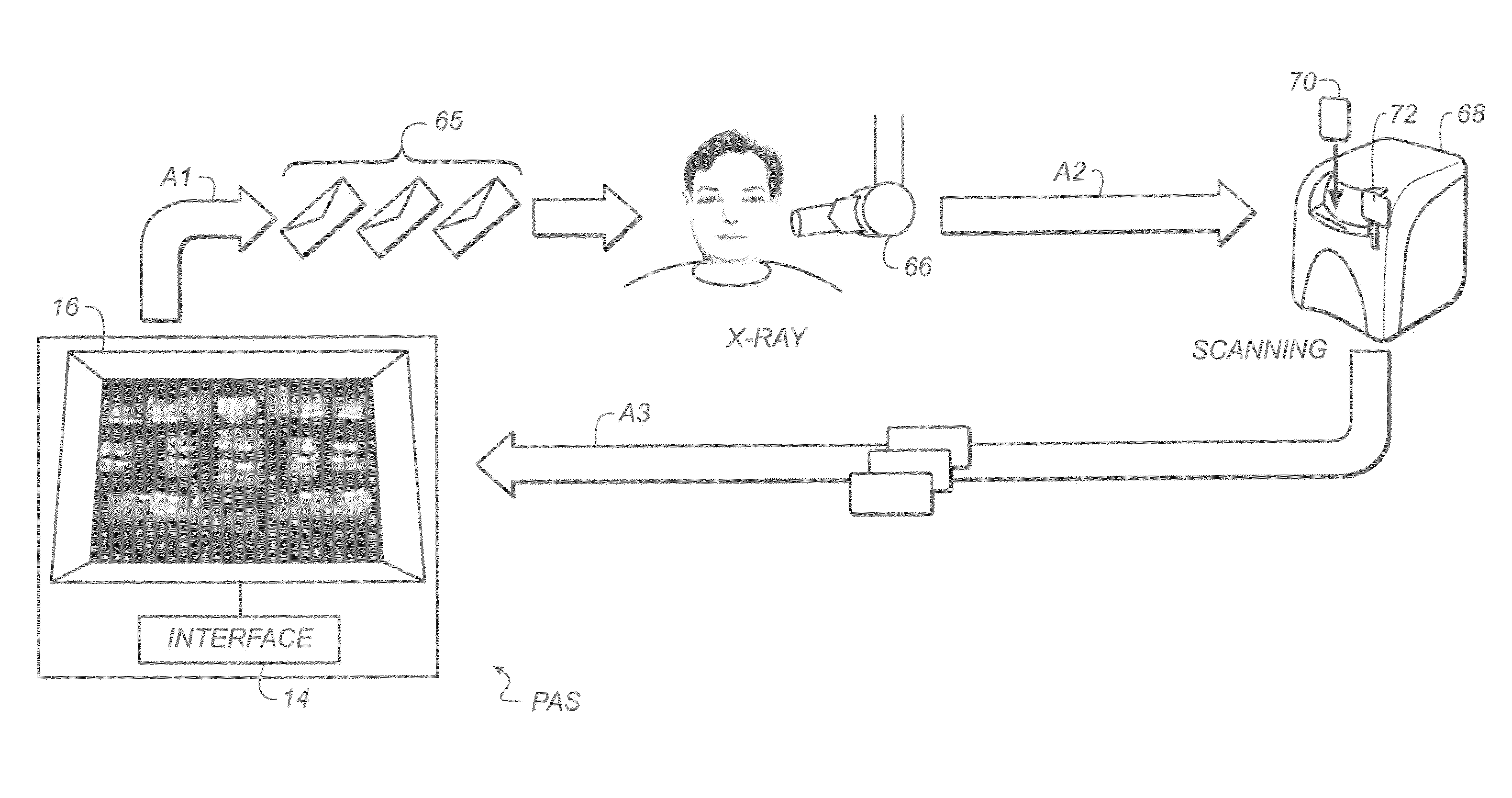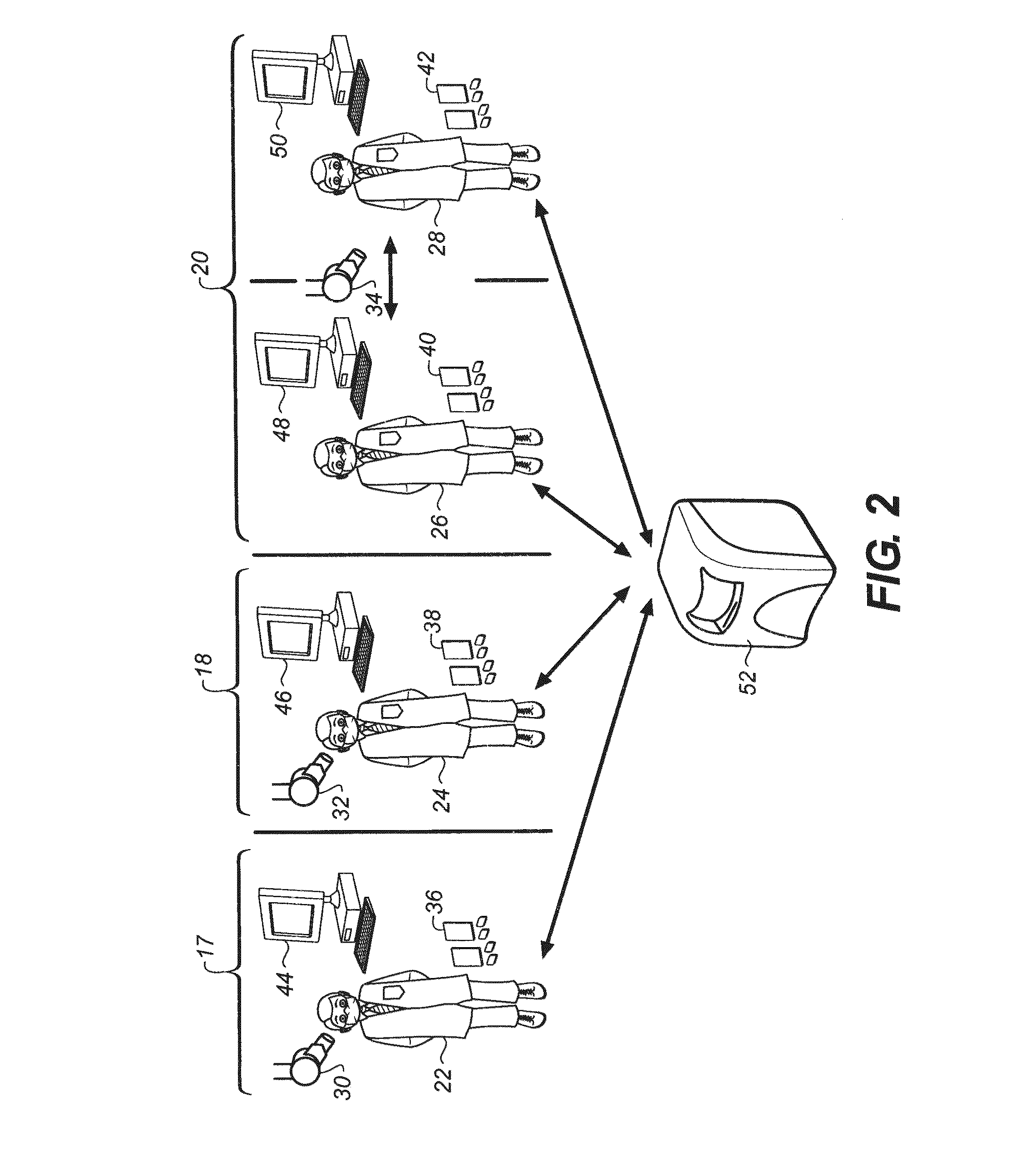Method and system for phosphor plate identification in computed radiography
a computed radiography and phosphor plate technology, applied in the field of medical items identification, can solve the problems of increasing the probability of mismatch between a particular plate and the patient and treatment data, especially high probability of mismatch, etc., and achieves the effect of simple, convenient and reliabl
- Summary
- Abstract
- Description
- Claims
- Application Information
AI Technical Summary
Benefits of technology
Problems solved by technology
Method used
Image
Examples
Embodiment Construction
[0042]It is noted that the present invention is not limited to medical radiography in general or to intra-oral dental radiography in particular. The present invention is suitable for other medical and non-medical applications as well.
[0043]In the context of the present disclosure, the equivalent terms “flexible information carrier plate”, “flexible plate”, “CR plate” or simply “plate” refer to photo-stimulable phosphor plates (PSP plates) that are used for image storage in the computed radiography (CR) arts, deployed in a manner analogous to the photo-sensitized plates that they have replaced in many applications. The information carrier plate is considered flexible when it has at least some degree of conformance to curvatures useful for intra-oral imaging.
[0044]In the context of the present disclosure, the term “scanner” or “scanning device” refers to a device or apparatus that is capable of obtaining stored image data from the flexible information carrier plate following exposure ...
PUM
 Login to View More
Login to View More Abstract
Description
Claims
Application Information
 Login to View More
Login to View More - R&D
- Intellectual Property
- Life Sciences
- Materials
- Tech Scout
- Unparalleled Data Quality
- Higher Quality Content
- 60% Fewer Hallucinations
Browse by: Latest US Patents, China's latest patents, Technical Efficacy Thesaurus, Application Domain, Technology Topic, Popular Technical Reports.
© 2025 PatSnap. All rights reserved.Legal|Privacy policy|Modern Slavery Act Transparency Statement|Sitemap|About US| Contact US: help@patsnap.com



